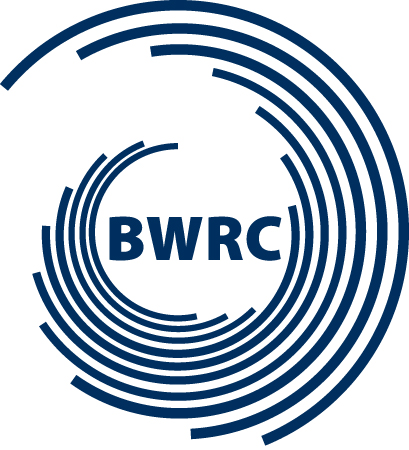Bridging the gap between science and art
December 4, 2018
Share
![[Mumford Research Group and artist Owen Fernley]](/gazette/sites/gazettewww/files/assets/WEB%20Mumford%20research_group.jpg)
A recent creative collaboration at a lab affiliated with the Beaty Water Research Centre is showing that when art meets science, good things happen.
 Earlier this year, Kevin Mumford, an associate professor and researcher in the Department of Civil Engineering, hosted artist, geophysicist, and Queen’s alumnus Owen Fernley (Sc’01) at his environmental engineering lab. The residency was made possible through a partnership with Art the Science (ATS), a non-profit organization founded by Queen’s alumnus Julia Krolik (MSc ’14) that facilitates artist residencies in science research spaces.
Earlier this year, Kevin Mumford, an associate professor and researcher in the Department of Civil Engineering, hosted artist, geophysicist, and Queen’s alumnus Owen Fernley (Sc’01) at his environmental engineering lab. The residency was made possible through a partnership with Art the Science (ATS), a non-profit organization founded by Queen’s alumnus Julia Krolik (MSc ’14) that facilitates artist residencies in science research spaces.
The goal of the residency is to give artists the opportunity to explore and expand their practice while immersed in a research environment while, at the same time, providing scientists with an innovative outlet for sharing their research with the public. The second phase of the program engages the public through physical and online exhibitions.
“I’m always interested in creative solutions to problems. A chance to have an artist work alongside researchers in my lab sounded like an excellent opportunity to tap into a different creative perspective,” Dr. Mumford says. “It was also an opportunity to talk to an artist about how the results of science and engineering research, even the process of science and engineering research, could be better communicated to people outside of the lab and outside of the discipline.”
Fernley specializes in creative coding, where computer programming is used as a medium for artistic and creative purposes.
During his residency, Fernley had to quickly gain an understanding of the lab’s various research projects. Dr. Mumford’s research is focused on the fate of hazardous chemicals when they are discharged into the environment, particularly subsurface environments such as soil and groundwater, as well as the development and optimizing of clean-up technologies. The group’s research projects include physical models for liquids and gases moving through porous media and computer models that describe those processes and apply them to new situations.
Fernley interacted with lab members asking questions and engaging in discussions. He then absorbed the knowledge he gained and experimented with ways he could incorporate what he learned into his artwork. He became most inspired by the negative pore space between sand grains.
“In the lab we observed gas as it flowed through packed sand, leaving behind intricate branching pathways. I learned at the residency that when spherical shapes are packed together, the space between is constructed from only six known configurations. Combining them together, you get these unique pathways between the sand,” he says. “Of course, the shape of each sand grain, the viscosity of the gas, and the shifting of the grains all change the paths further, but I wanted to explore what the negative space means and how it could be approximated through creative coding.”
Pre- and post-residency interviews, including a daily artist video diary, were completed as part of the evaluation process led by Art the Science’s Program Evaluation Officer Catherine Lau, to better understand the value of the scientist-artist collaboration. A report summarizing evaluation findings is available on Art the Science’s website.
For Dr. Mumford the residency made it clear that an artist can contribute to the research environment, particularly by offering a new perspective for scientists and encouraging creative thinking in the lab. He hopes this residency would stimulate discussion and creative ideas, thereby fostering better problem solving.
“The entire experience was really interesting and really positive. I especially liked listening to Owen get excited about what he was seeing in the lab, how he was piecing it together, and what aspects of the work were jumping out at him artistically,” he says. “I’m very excited to see what he will create based on this experience with us.”
In addition to valuable discussions, Fernley’s presence prompted conversations with researchers outside the lab who were curious to learn about this interdisciplinary collaboration.
Fernley is currently working on the final artwork, titled Between the Sand, which will be presented at Art the Science’s digital exhibition launch on Feb. 27. This event will feature a panel discussion (including Krolik, Fernley, Dr. Mumford, and his graduate students) and mark the digital release of the research-based artwork into Art the Science’s Polyfield Gallery.
In addition, an interactive installation of Between the Sand, which places the audience inside the experiment, will occur at Science Rendezvous on May 11, in Kingston.